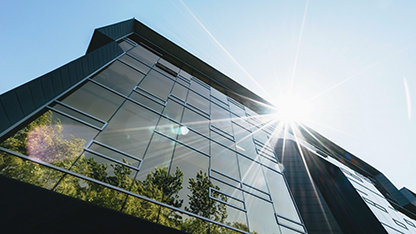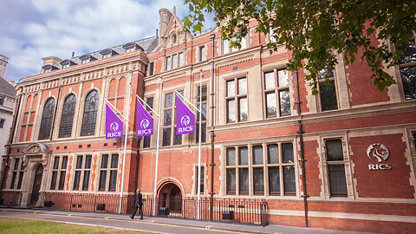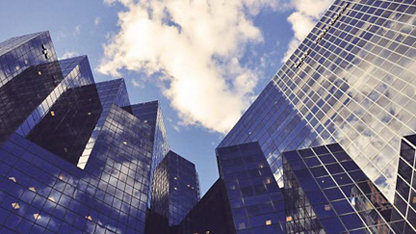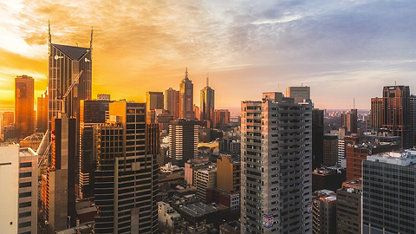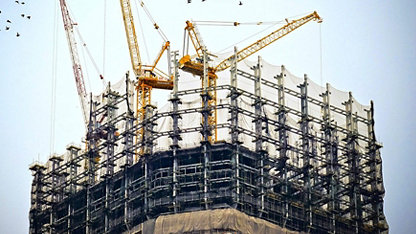Is it time to reimagine the use of commercial real estate space?
Before the pandemic, many town and city spaces were lively and attracted concentrations of people. Employees often found their day-to-day existence interwoven within the surrounding area and auxiliary substructure, and commercial real estate was the lynchpin of the lifestyles many knew pre-Covid.
However, a significant period of time has passed since the first lockdowns and things have changed.
Evaluating the commercial property market
Due to the events of 2020 and a growing trend toward digitisation, the way that people interact with shared areas has become more controlled. This has led to a decrease in traffic and activity to most types of commercial real estate buildings.
With hybrid working now being the norm, businesses have been severely impacted. Vacancy rates have increased. This has also altered the culture that surrounds commercial real estate spaces and systems that support them. Due to the impact of these factors, the ways commercial real estate is used could be shifting.
Whilst some movement toward a working from home culture was developing before the pandemic arrived, there is no doubt that the arrival of Covid-19 has accelerated this. Commercial buildings are now operating on lower capacities with higher overheads, pushing new business decisions to be made around what to do with redundant space.
Paul Bagust, Head of Land & Property Standards, RICS comments:
"The onset of Covid-19 has undoubtedly delivered a seismic shock to the commercial real estate sector. It has rapidly accelerated several key existing trends that would have driven longer-term change and provided sheer operational and logistical challenges to professionals."
Reimagining spaces
The needs of occupiers have changed. In order to navigate the unpredictable, changing real estate sector, investors are evaluating assets and looking for ways to increase the resilience of their portfolios. Is diversifying interests and reimagining the function of spaces the future?
The JLL report shows that there are currently 40,000 vacant retail units across the UK and predict this number to double by 2026 (JLL, 2021). Vacant buildings are of no use to anyone so repurposing them appears to be the logical step. Some investors have begun to convert commercial properties for residential use, which is a more stable market due to shortages in residential accommodation and consistent high demand. Other properties have been adjusted to offer complementary or altered use. Historically, this is how many of the older buildings still standing have survived.
Reimagining spaces does bring important considerations. Alterations need to factor in the cost of compliance and meeting relevant health and safety requirements. This is likely to lengthen the timescales for the planning and building control process, requiring additional thought before any conversion is undertaken. It is also important to ensure repurposed buildings meet the prescribed height criterion too, something which may present issues for the conversion of property such as office spaces into flats.
When developer and investors are looking to convert commercial space to residential spaces, their restrictive nature might deter it as a possible option. The possibility of compliance, extended timescale, and higher cost might cause them to look elsewhere in the market.
According to JLL, a recent trend has been to convert commercial spaces to warehouses and distribution centres. Before the pandemic, the growth of online shopping had already seen a steady rise as fewer people were shopping at brick-and-mortar stores. Coupled with the hit of the retail market during the pandemic, the transformation of retail space to product warehouse is now becoming more common. As JLL report, there is an increasing demand for distribution centres and demand for logistics and technology to enable fast delivery (JLL, 2021).
However, there are also downsides to changing the functions of properties. Conversions may present difficulties for people around the area, creating issues like noise, pollution, and disruption.
So, how can commercial spaces be transformed into functional spaces that can truly benefit and regenerate cities? CBRE recently showcased several examples in this area. In one case study, a car dealership in Liverpool was transformed into a gym for the public to enjoy. Other examples included converting a department store into shopping arcades and leisure facilities, maintaining the commercial value of the space but adjusting to the current market. It is clear then that there is no one size fits all when it comes to repurposing commercial spaces.
As the market changes, we must adapt to the current demands. We have seen there are many ways in which investors and developers can tailor redundant space to the new real estate market. To discuss this topic further and learn more about opportunities and challenges facing commercial property, join the RICS Global Commercial Property Conference on the 6 - 8 December 2021.
Kieran Halliwell and Anisah Moosa




